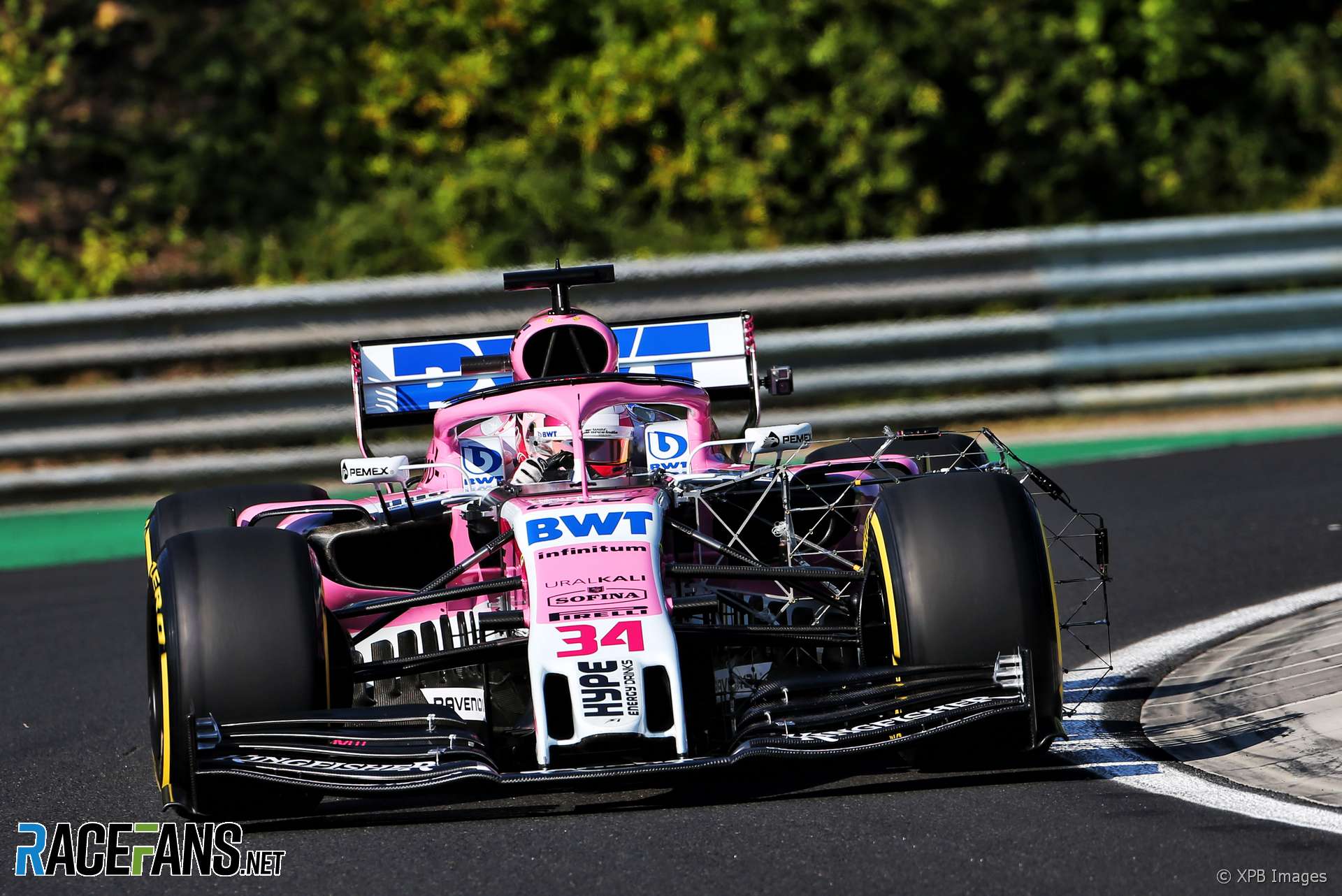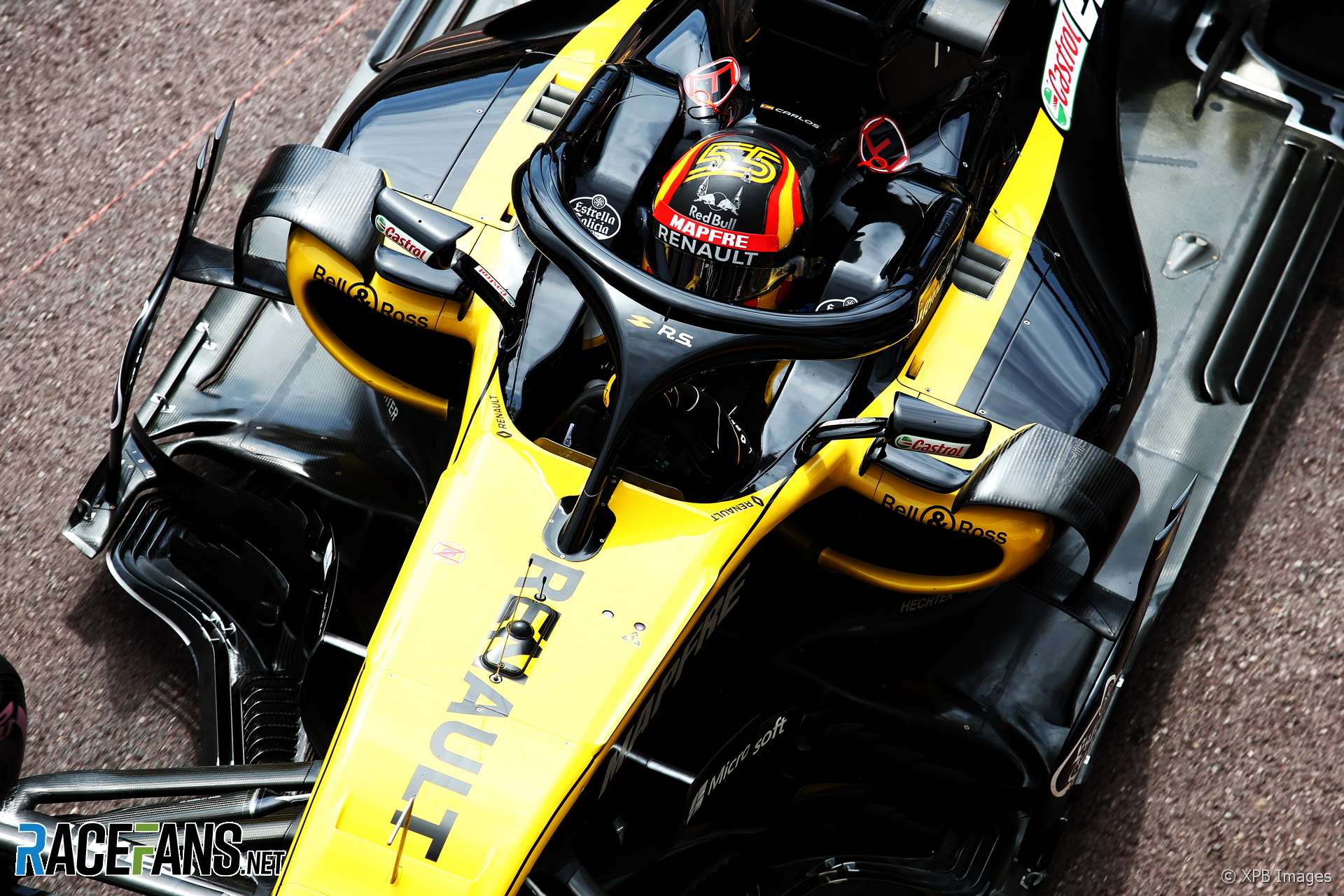New rules for the 2019 F1 season will have more dramatic impact on car design than the introduction of Halo did last year, according to Renault’s chassis technical director Nick Chester.
Among the changes to the technical specification of the cars for this season are wider front wings, taller rear wings and an increase in the maximum fuel allocation from 105kg per race to 110kg.While the introduction of Halo last year significantly altered the appearance of the cars, it didn’t create as many problems for designers according to Chester.
“It wasn’t too big a change actually,” he reflected during last season. “The reg changes in terms of how we developed were fairly small.
“We still changed the car quite a lot because we learned a lot in ’17 that we wanted to put it into the ’18 car, But the main concepts were fairly similar.
“We took a little bit of a hit in terms of the engine cover [shark] fin, but it wasn’t too severe.”
While the new rules will force significant changes on this year’s cars, Chester said Renault’s 2018 design was shaped more by their objectives.
“It was more our own targets of what we wanted to change, where we wanted to make gains more than the regs,” he explained. “The biggest reg change structurally was the Halo, That was the one that influenced monocoque design.”
Halo “wasn’t a game-charger” for the design team last year, said Chester. “The changes from ’18 to ’19 will be much bigger,” he added.
While some technical chiefs such as Williams’ Paddy Lowe have downplayed the importance of the increased fuel limit, Chester indicated Renault were likely to take advantage of the increased limit.
“I think quite a few tracks you might do,” he said. “It depends which engine you’ve got of course.”
Advert | Become a RaceFans supporter and
2019 F1 season
- Crying in the Melbourne car park at 2019 grand prix was my career low – Ocon
- McLaren Racing reports reduced £71 million loss in 2019
- Kvyat: Hockenheim podium last year was “my biggest achievement” so far
- How the FIA’s new encrypted fuel flow meter targets Ferrari’s suspected ‘aliasing’ trick
- “He smashed my office door”: 23 must-see moments from ‘Drive to Survive’ season two






Ced
17th January 2019, 8:01
It seems we might have some surprises this year cause of the rules changes.. Some rumours say that even Ferrari ran the Merc nose concept in its wind tunnel to make some comparisons.
Jere (@jerejj)
17th January 2019, 10:20
I also doubt the 5 kg increase in the maximum fuel load allowance is really going to make any difference to the racing. The teams are still going to keep under-fueling the cars for the races to save weight as long as the rules don’t define a minimum permitted fuel load alongside the maximum.
Chaitanya
17th January 2019, 10:45
There also less drag which would be easier on fuel.
Tristan (@skipgamer)
17th January 2019, 11:28
I keep thinking back to Red Bull saying the changes were pointless and they were already at 2018 levels of downforce a few months ago…
Can’t help but think that was very untrue given the recent press about how the other teams feel about the changes.
Jere (@jerejj)
17th January 2019, 13:40
@skipgamer Mario Isola has also pointed out in a similar way to Red Bull.
Keith Collantine (@keithcollantine)
17th January 2019, 15:23
@skipgamer I have to say that’s a particularly spurious argument from Horner. The purpose of the rules wasn’t to slow the cars down but to reduce the ‘outwashing’ effect. If they had wanted to slow the cars down they wouldn’t have made the front wings wider.
hobo (@hobo)
17th January 2019, 16:39
@keithcollantine – Fair enough. And not all downforce produces the same types/shapes of drag, nor always in the same place. But if at least two sources indicate they are at or above 2018 levels of downforce, and if these highly-skilled aero experts are very likely tuning said downforce production such that downstream airflow is beneficial for the remainder of the car, how likely do you think it is that the aero wake is significantly different than what we saw in 2018?
I realise that getting back to 2018 levels of downforce do not mean that the aero will work the same way as 2018 or that the effects on following cars will be exactly the same as 2018. And I do hope that this is headed in a beneficial direction even if it is not quite there yet. But color me skeptical
Cars in F1 are designed to maximize their own benefit. End. Unless and until cars are specifically designed to minimize disturbance (for other cars), close racing is going to be very difficult. I get that this wing change is an attempt at reducing disturbance. But reducing is not minimizing and aero designers will just work to recreate that which they’ve had before. It does not benefit one team to make a car that others can follow, so they won’t.
hobo (@hobo)
17th January 2019, 18:51
should have been, “And not all downforce produces the same drag effects or the same types/shapes of disturbance, …”
Alan Barker ( Trotsky's Ghost )
18th January 2019, 18:33
…point I’ve often made in the past, hobo….and well worth making once more.
With all the costs and interior structures required to make these cars the
most technically advanced in the world, there is not the slightest impetus
for their designers to seek any form of co-operation with their competitors
on the track. It’s all out war with no quarter asked and none expected.
Everybody is totally committed to damn the opposition.
Only utterly rigorous rule-making and enforcement can tame this kind
of warfare. Because be in no doubt……warfare it certainly is.
Jimmi Cynic (@jimmi-cynic)
18th January 2019, 7:38
I find F1’s focus on aero such a drag. A down forced series, making it difficult to follow our natural aspiration for close racing.
Shimks (@shimks)
18th January 2019, 14:46
Another excellent comment, @jimmi-cynic. Keep ’em coming! :O)
NS Biker (@rekibsn)
20th January 2019, 1:18
Yep … struck a chord that will keep us grounded and not drifting out of line.
How long till testing starts .?? Don’t look it up, just wing it.